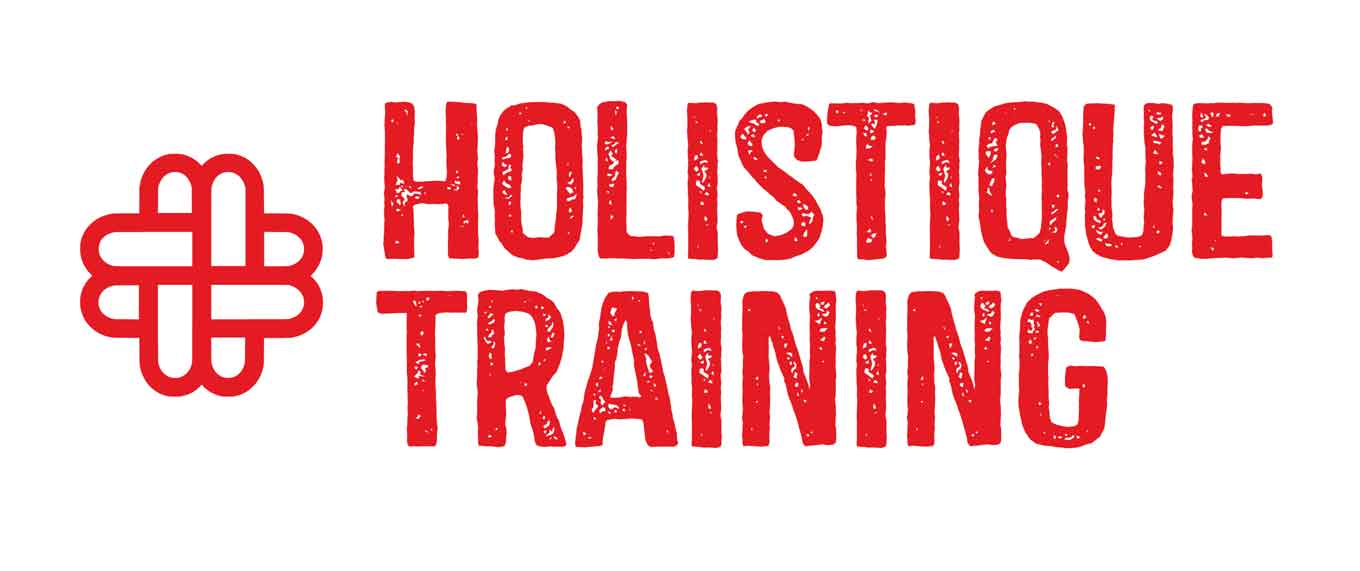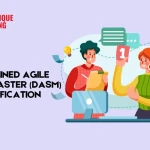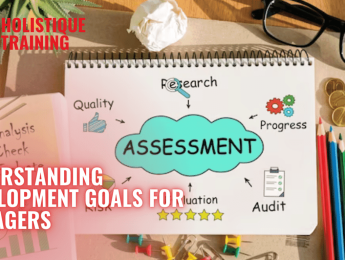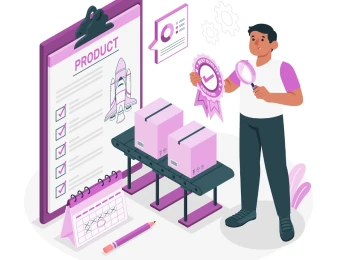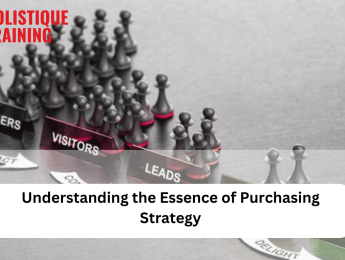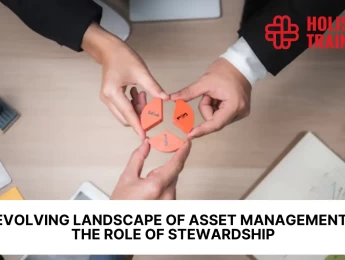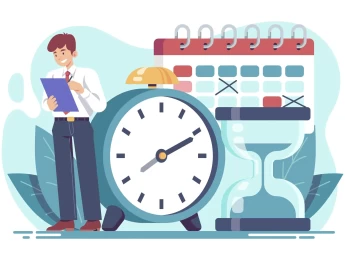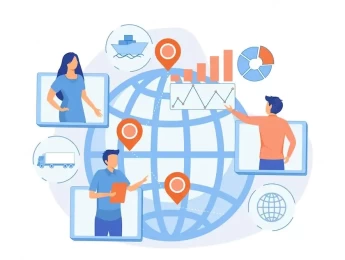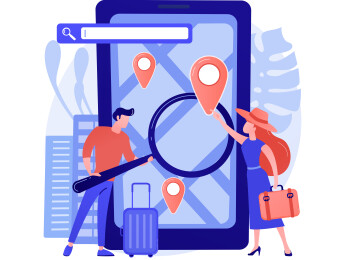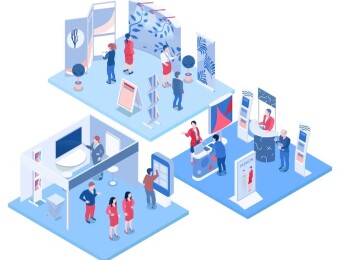- Table of Contents
- 1. Introduction: The Rise of Agile Thinking
- 2. What Are Agile Skills?
- Methodology vs. Mindset: Understanding the Difference
- 3. Agile Beyond IT: Expanding Into New Industries
- 4. Remote Work and Agile Teams
- 5. Agile = Faster Innovation
- 6. The Link Between Agile Skills and Leadership
- 7. Top Agile Skills Employers Are Looking For in 2025
- a) Design Thinking
- b) Iterative Planning and Delivery
- c) Prioritisation and Backlog Management
- d) Familiarity with Scrum/Kanban Tools
- e) Collaboration and Cross-Functionality
- f) Feedback Integration
- Market Evidence
- 8. Training and Certification: How to Build Agile Competence
- 9. Challenges in Adopting Agile – and How to Overcome Them
- 10. Conclusion: A Future Built on Adaptability
Introduction
In the past, organisations relied heavily on rigid, top-down models of project management and strategic planning. These traditional approaches, while effective in certain stable environments, have proven too inflexible in today's rapidly changing world. The 21st-century workforce is defined by complexity, disruption, and constant evolution—and as such, a new approach has emerged as the gold standard: agility.
Agile thinking, once confined to software development, has now become a universal buzzword across industries. It signifies a shift in mindset from control and predictability to flexibility and responsiveness. Businesses, regardless of sector, now seek employees who can pivot, collaborate, and innovate in real time.
In this article, we will discuss what agile skills are, why they are in such high demand across industries in 2025, and how professionals can develop these vital competencies to remain competitive in the global job market.
What Are Agile Skills?
Agile skills refer to a dynamic set of capabilities that empower individuals to thrive in fast-paced, unpredictable environments. In contrast to traditional, linear approaches to work, agile skills emphasise adaptability, responsiveness, and continuous evolution. They are not limited to technical tools or project frameworks—they encompass a broader mindset that shapes how professionals think, act, and collaborate.
At their core, agile skills include:
- Adaptability: The ability to shift strategies or priorities based on real-time data, feedback, or changing conditions.
- Iterative Thinking: Embracing incremental progress and refinement rather than waiting for a perfect end product.
- Rapid Decision-Making: Making informed choices quickly, even in the face of ambiguity or incomplete information.
- Cross-Functional Collaboration: Working effectively with diverse teams and departments, often outside of one's core area of expertise.
- Growth and Learning Orientation: A commitment to continual learning, experimentation, and personal development.
Agile, therefore, is not merely a methodology—it is a cultural and behavioural framework that shapes how individuals approach complexity and change. While agile methodologies like Scrum and Kanban provide structure and processes, agile skills refer to the cognitive and interpersonal strengths that enable professionals to apply these frameworks effectively.
Methodology vs. Mindset: Understanding the Difference
To further illustrate the distinction, the following table presents a comparative overview:
Aspect | Agile as Methodology | Agile as Skillset |
Origin | Software development (e.g., Scrum, Kanban) | Broad professional application across industries |
Focus | Iterative project management and task execution | Mindset of adaptability, responsiveness, and innovation |
Tools | Scrum boards, sprint planning, backlog grooming | Emotional intelligence, empathy, collaboration, growth mindset |
Goal | Deliver working software or products quickly | Solve complex problems, lead meaningful change, and enhance outcomes |
Structure | Clearly defined roles, ceremonies, and workflows | Flexible, self-directed behaviours aligned with changing contexts |
While methodologies provide the how, agile skills define the who—the kind of professionals who can operate, lead, and evolve in modern, complex workplaces. These are individuals who don’t simply follow a framework but embody agility in the way they listen, respond, prioritise, and improve.
Agile Beyond IT: Expanding Into New Industries
It is a common misconception that agile is only relevant for software developers or IT project managers. In today’s business environment, agile skills are considered critical for professionals in marketing, operations, human resources, education, healthcare, and more. A marketing specialist, for instance, must iterate campaigns based on audience feedback, while a teacher may adapt learning strategies mid-course to address student needs—both examples of agility in practice.
Ultimately, as workplaces become more decentralised, data-driven, and customer-focused, agile skills are becoming the currency of professional adaptability. Whether you’re managing a team, supporting a process, or delivering creative solutions, possessing an agile skillset allows you to remain effective, even in the face of rapid and unpredictable change.
Roles such as product managers, UX designers, operations analysts, and even HR specialists increasingly demand an agile mindset. The ability to iterate, respond to feedback, and improve processes in real time is now a baseline expectation across many sectors.
A 2023 report by McKinsey & Company highlighted that organisations adopting agile across departments reported 30% higher performance and 25% faster time to market.
Remote Work and Agile Teams
The global adoption of remote and hybrid work arrangements has profoundly transformed the modern workplace. No longer confined to office walls or fixed working hours, teams now operate across time zones, cultural boundaries, and digital platforms. While this shift offers unprecedented flexibility and access to global talent, it also introduces significant challenges in coordination, communication, and trust-building.
Agile skills have emerged as a powerful antidote to these complexities. Remote teams, by their very nature, require a higher degree of autonomy, responsiveness, and collaboration. Agile practices such as daily stand-ups, sprint reviews, and retrospectives provide structure and rhythm, helping teams stay aligned without micromanagement. These rituals foster transparency, accountability, and continuous improvement—crucial in a remote setting where misunderstandings can easily go unnoticed.
Moreover, digital tools like Kanban boards (e.g., Trello, Jira), collaborative whiteboards (e.g., Miro, MURAL), and real-time chat platforms (e.g., Slack, Microsoft Teams) play a pivotal role in replicating the visibility and immediacy of physical workplaces. But beyond tools, the success of remote agile teams hinges on human skills: emotional intelligence, proactive communication, and the capacity to manage one's own time, energy, and focus.
Agile professionals are particularly well-suited to thrive in these environments. They are trained to self-organise, embrace feedback, and iterate their work processes in response to shifting demands. This mindset empowers them to navigate ambiguity, build trust virtually, and contribute meaningfully regardless of geographical constraints.
Indeed, in a landscape where physical proximity is no longer a precondition for collaboration, agile thinking enables organisations to harness the full potential of distributed teams. As remote work becomes the norm rather than the exception, agile skills are becoming essential—not optional—for productivity, cohesion, and innovation.
Agile = Faster Innovation
In the age of digital disruption, innovation is no longer a competitive advantage; it is a survival strategy. Organisations that cling to static models, long planning cycles, or rigid hierarchies are quickly outpaced by leaner, more adaptive competitors. This is where agile methodologies offer a transformative advantage.
At its core, agile thinking encourages a culture of experimentation. Rather than investing in lengthy product cycles or perfecting every detail before launch, agile organisations embrace iterative delivery. They release minimum viable products (MVPs), gather feedback, and improve in rapid, focused cycles. This not only reduces risk but also ensures that offerings remain aligned with real-time customer needs.
The table below highlights key agile practices and how they fuel innovation:
Agile Practice | Innovation Outcome |
Sprints & Iterations | Faster development and delivery of products and services |
Continuous Feedback | Early detection of user issues, market misalignment, or unmet needs |
Cross-Functional Teams | Integration of diverse expertise, leading to more creative solutions |
Rapid Prototyping | Encourages failure as a form of learning, speeding up improvement cycles |
What sets agile innovation apart is not just speed, but resilience. When teams are empowered to test assumptions, learn from failures, and respond quickly, innovation becomes embedded in the organisational culture. This decentralised model removes unnecessary layers of approval, unlocking creativity and initiative at every level.
Companies like Spotify, Amazon, and Google have long been heralded for their agile innovation models. But increasingly, even traditionally conservative sectors such as finance, education, and healthcare are adopting agile to stay competitive in a volatile market.
By removing bureaucratic barriers and establishing rapid learning loops, agile empowers organisations not only to innovate more quickly but to do so with purpose, alignment, and confidence. It turns uncertainty into opportunity and keeps companies—and their people—ready for whatever comes next.
The Link Between Agile Skills and Leadership
In 2025, leadership is no longer defined by authority, hierarchy, or rigid control—it is defined by agility. The era of top-down, command-and-control management has given way to a new model where adaptive, inclusive, and responsive leadership is essential. As change accelerates across markets, technologies, and workforce expectations, leaders are increasingly judged not by how well they direct, but by how effectively they enable and empower.
Agile leaders are those who navigate uncertainty with clarity and composure. They are attuned to shifting priorities and capable of guiding their teams through complex, evolving landscapes. Rather than focusing solely on efficiency and control, agile leaders prioritise resilience, innovation, and learning. Their goal is not merely to keep operations running—but to help their teams thrive under change.
The hallmark behaviours of agile leaders include:
- Empowering rather than micromanaging: Agile leaders trust their teams. They provide autonomy and ownership, allowing individuals to make decisions, test ideas, and take initiative. This decentralisation fosters engagement and accountability.
- Leveraging data and feedback to guide decisions: They embrace evidence-based thinking. Agile leaders solicit feedback from stakeholders, customers, and team members, using it to continuously improve processes and outcomes.
- Embracing ambiguity and thriving under pressure: Rather than seeking certainty, agile leaders are comfortable with “not knowing.” They adapt their strategies in real time and remain calm amidst volatility.
- Investing in learning and development: Agile leaders view every challenge as a learning opportunity—for themselves and their teams. They prioritise upskilling, mentorship, and a growth mindset across the organisation.
In agile organisations, leadership is not limited to those with formal titles. Team members at all levels are encouraged to demonstrate leadership through initiative, collaboration, and accountability. This distributed leadership model enables faster responses and greater resilience across the system.
A 2024 study published by the Harvard Business Review reinforces the value of this approach. It found that organisations led by executives who embody agile principles are 3.8 times more likely to outperform their competitors in both employee satisfaction and innovation outcomes. These leaders foster cultures that are not only more productive, but also more inclusive, psychologically safe, and future-ready.
Moreover, in the post-pandemic world, employees increasingly seek leaders who are empathetic, transparent, and collaborative. Agile leaders meet this demand by showing vulnerability, facilitating open dialogue, and encouraging experimentation without fear of failure.
Ultimately, agility in leadership is not about reacting faster—it is about thinking differently. It is about creating the conditions for others to grow, contribute, and innovate. As business landscapes continue to evolve, the ability to lead with agility will be the defining trait of successful organisations—and the people who drive them.
Top Agile Skills Employers Are Looking For in 2025
As the demand for agility in organisations continues to rise, employers are no longer satisfied with theoretical knowledge of agile methodologies. They seek professionals who can demonstrate agile thinking in action—individuals who can apply iterative strategies, collaborate across boundaries, and innovate in real time. In 2025, the most competitive candidates are those who combine technical fluency with soft skills rooted in empathy, adaptability, and critical reflection.
Below are some of the most sought-after agile skills and why they are essential in today’s job market:
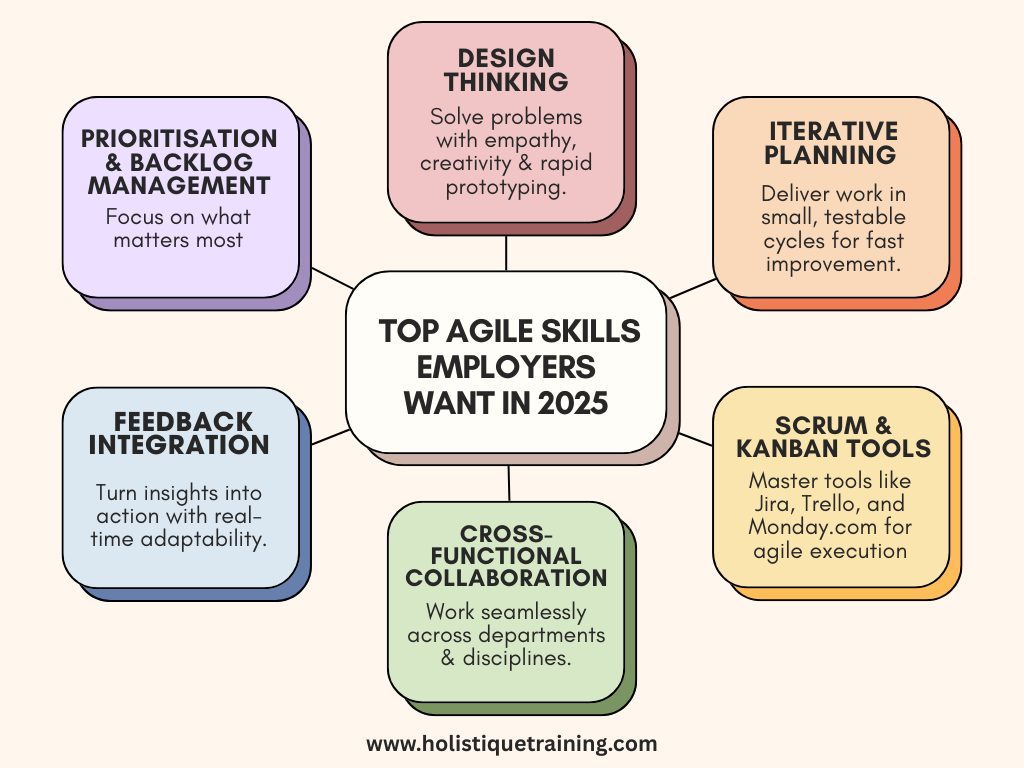
a) Design Thinking
Design thinking has become a core pillar of innovation within agile environments. It is a human-centred approach to problem-solving that places user needs and experiences at the heart of the creative process. This methodology encourages teams to deeply understand customer challenges through empathy interviews, rapid ideation, and iterative prototyping.
In practical terms, design thinking enables cross-functional teams to generate more relevant, impactful solutions. It helps reduce the risk of developing products or services that miss the mark, and fosters a culture of experimentation rather than perfection. Professionals with design thinking expertise can help their organisations adapt offerings in response to real-world insights—a key competitive advantage.
b) Iterative Planning and Delivery
At the core of agile work is the principle of iteration. Rather than planning large projects months in advance and delivering only at the end, agile professionals break work into smaller chunks—known as sprints or iterations. Each cycle involves planning, execution, feedback, and refinement.
This approach minimises waste, accelerates learning, and allows teams to pivot quickly in response to evolving priorities. Employers seek candidates who understand how to map deliverables into actionable iterations, monitor progress, and integrate lessons learned into future planning. It is a vital skill for staying responsive in fast-paced environments.
c) Prioritisation and Backlog Management
In a world of limited time and infinite tasks, prioritisation is a strategic necessity. Agile professionals must be adept at distinguishing between what is urgent and what is important, and at adjusting course as new information arises. Backlog management—the process of organising, updating, and refining work queues—is key to this.
Employers value individuals who can facilitate backlog grooming sessions, align stakeholders on changing priorities, and ensure that teams are always focused on high-value tasks. This skill ensures resources are deployed effectively, bottlenecks are avoided, and strategic objectives are met with efficiency.
d) Familiarity with Scrum/Kanban Tools
Agile frameworks such as Scrum and Kanban rely heavily on visualisation and transparency. Tools like Jira, Trello, Asana, and Monday.com allow teams to track progress, assign responsibilities, and maintain clarity on deliverables. But using these tools effectively requires more than basic technical knowledge.
Professionals who are proficient in configuring boards, setting sprint goals, automating workflows, and interpreting performance metrics are highly desirable. Familiarity with these platforms signals that a candidate is “plug-in ready” for agile teams, reducing onboarding time and ensuring smoother collaboration from day one.
e) Collaboration and Cross-Functionality
One of the most transformative elements of agile is its emphasis on cross-functional collaboration. Agile teams are deliberately composed of individuals from diverse departments—product, design, engineering, marketing, and more—who work together to achieve shared outcomes.
Success in such environments depends on strong communication, mutual respect, and the ability to integrate different perspectives into cohesive strategies. Employers are particularly interested in professionals who can bridge silos, facilitate inclusive conversations, and manage complex interpersonal dynamics.
In an increasingly remote and globalised world, this skill is not merely a bonus—it is a core requirement.
f) Feedback Integration
In agile environments, feedback is not a periodic event; it is a continuous process. Agile professionals must not only receive feedback constructively, but also action it promptly and effectively. This applies to feedback from team members, customers, managers, and data analytics alike.
Feedback integration involves critical thinking, humility, and adaptability. Employers look for individuals who treat feedback as a growth opportunity rather than a critique—who can revise deliverables quickly, adjust behaviours, and demonstrate a commitment to constant improvement. It is, ultimately, a sign of emotional intelligence and professional maturity.
Market Evidence
According to LinkedIn’s 2025 Workplace Learning Report, agile competencies are now among the top five most sought–after skills in job listings across sectors like finance, education, logistics, and media. Employers emphasise these skills as critical for maintaining resilience and adaptability in rapidly changing markets. “Build the right skills, faster… building an agile skills ecosystem is easier said than done.”
Training and Certification: How to Build Agile Competence
To remain relevant in 2025 and beyond, professionals must continually invest in agile training and credentials. Here are some of the most recognised certifications:
- Certified Scrum Master (CSM): A foundational credential for those managing agile teams.
- PMI-ACP (Agile Certified Practitioner): Ideal for project managers seeking a formal validation of their agile knowledge.
- SAFe Agilist: Focuses on scaling agile in large enterprises.
One unique option is the Certified Innovation Leader course by Holistique Training. This programme helps participants:
- Master innovation frameworks and tools.
- Conduct empathy interviews and visual prototyping.
- Lead design sprints and collaborative ideation workshops.
- Build a personal innovation plan aligned with organisational goals.
Ongoing learning is the fuel of agile transformation. Professionals who adopt a lifelong learning mindset are more likely to lead, adapt, and thrive.
Challenges in Adopting Agile – and How to Overcome Them
While agile offers undeniable benefits—greater responsiveness, faster innovation, and enhanced team collaboration—it is not always easy to implement. Transitioning to agile requires not just a change in process, but a fundamental shift in mindset, culture, and leadership. Many organisations underestimate this transformation, leading to friction, stagnation, or even failure in agile adoption.
Here are some of the most common challenges—and practical strategies to overcome them:
1. Cultural Resistance
In many organisations, employees are deeply rooted in hierarchical thinking and rigid workflows. Agile, with its emphasis on decentralised decision-making, continuous feedback, and shared ownership, can feel disruptive or even threatening to those accustomed to predictability and control.
Solution:
Start by fostering open dialogue and psychological safety. Engage employees early, communicate the why behind agile, and celebrate small wins. Use storytelling and internal case studies to show how agility leads to better outcomes, not chaos.
2. Lack of Training and Awareness
Without a solid understanding of agile principles, teams may fall into “doing agile” rather than “being agile.” They might mimic ceremonies (like daily stand-ups or retrospectives) without embracing the deeper mindset of learning, experimentation, and flexibility.
Solution:
Invest in hands-on, contextualised training—not just certification. Combine theoretical knowledge with real-world simulations, mentoring, and ongoing coaching. Encourage continuous learning across all levels, not just among project managers or developers.
3. Overemphasis on Tools over Mindset
Many teams mistakenly equate agile with the tools they use—Jira, Trello, or digital Kanban boards—without understanding that these platforms are only enablers, not the essence of agility. A focus on tool adoption without a parallel shift in behaviours leads to superficial transformation.
Solution:
Emphasise that agile is primarily about people and principles. Integrate reflective practices, value-based discussions, and mindset workshops to reinforce the importance of values like collaboration, adaptability, and customer-centricity.
4. Poor Leadership Buy-in
Without authentic support from leadership, agile initiatives often stall. Leaders who don’t actively demonstrate agile behaviours—such as transparency, empowerment, and responsiveness—can unintentionally reinforce old ways of working.
Solution:
Agile transformation must start from the top. Provide executive-level coaching, create leadership cohorts for shared learning, and integrate agile goals into performance reviews and strategic KPIs. Leaders should model vulnerability, agility, and a willingness to experiment.
How to Overcome These Barriers – Key Strategies
Start Small
Pilot agile in a single team or department. Use measurable outcomes to build momentum and demonstrate value.
Invest in Coaching and Training
Provide tailored learning paths for teams, leaders, and stakeholders. Include on-the-job coaching to support behavioural change.
Build a Culture of Experimentation
Encourage curiosity, celebrate learning from failure, and remove the fear of “getting it wrong.” Make experimentation a core competency.
Model Agile Leadership
Leaders should adopt agile values in daily decision-making. They must empower teams, remain transparent, and be open to change themselves.
Conclusion
Agile skills are not a passing trend. They are the foundation of professional resilience in a volatile world. As technological, economic, and social changes accelerate, the ability to adapt will determine both individual and organisational success.
In 2025, agility is not optional—it is essential. Whether you are a team leader, a specialist, or an early-career professional, developing agile capabilities is key to unlocking opportunities, driving innovation, and building a meaningful career.
Ready to future-proof your skillset? Explore our specialised agile and innovation training programmes today at Holistique Training. Your next level starts with the right mindset.
